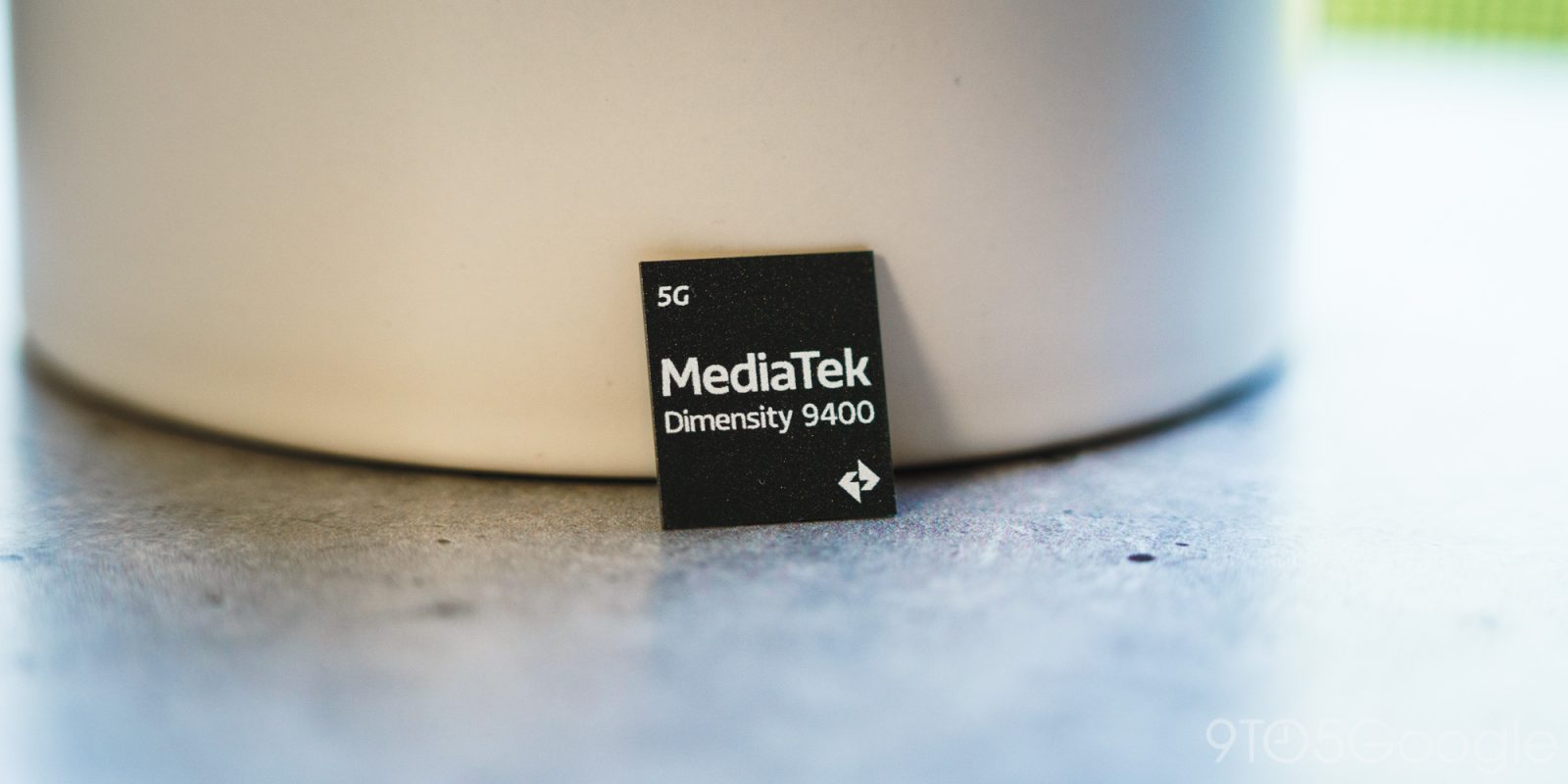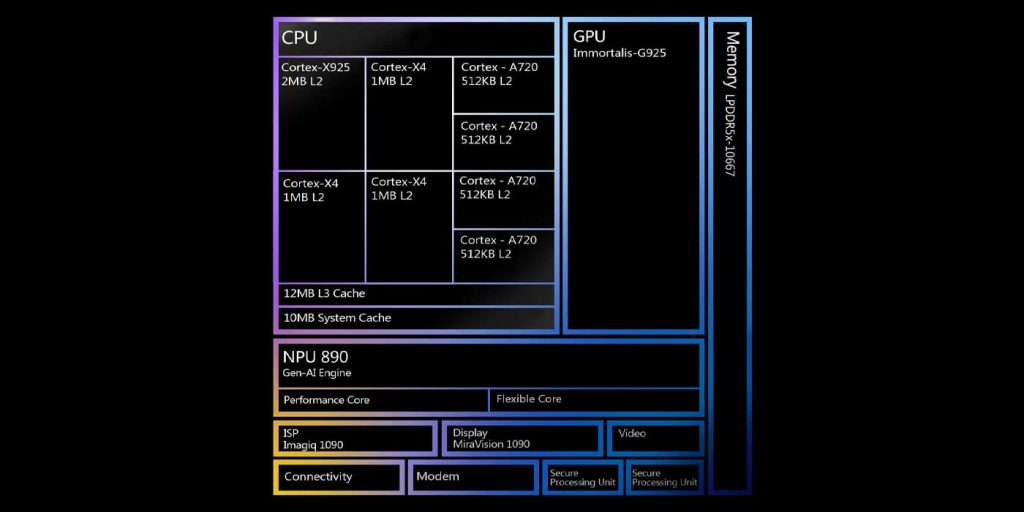
MediaTek promises big improvements with the new Dimensity 9400 chipset built on TSMC’s 3nm process, offering more efficiency and power with an upgraded focus on generative AI.
MediaTek shifted last year to what it calls an “all big core” architecture. Rather than combining large cores with smaller companion cores, the Dimensity 9300 was built with four “ultra-large” cores and four big cores, sacrificing the smaller ones normally seen in SoCs. This change proved successful in last year’s chipset, and MediaTek is looking to continue the trend.
The Dimensity 9400 is made up of 1 Cortex-X925, 3 Cortex-X4 cores, and 4 Cortex-A720 cores. This all-Cortex makeup is packed into a chipset built on a 3nm process – an upgrade from the 4nm 9300. The powerhouse X925 takes up a similar slot to the three additional X4 cores, with the A720 blocks lining up beside them. This build is slightly different than the chipset that came before it. The A720 is the least powerful core in this chip, whereas the Dimensity 9300 brought A520 cores to the party.

According to MediaTek, the Dimensity 9400 is 40% more power efficient than the 9300, which marks a pretty big jump in performance between the two unique SoC designs, even with the unit housing a more powerful loadout. On top of that, the chip sees a 35% faster single-thread performance and 28% faster multi-thread performance. The added LPDDR5X memory certainly boosts performance a bit, supporting 10.7GB/s.
The chipset also brings an Immortalis-G925 GPU and MediaTek’s 8th iteration NPU. According to MediaTek, the GPU brings 41% faster peak performance and 40% faster raytracing performance. The GPU is more efficient and has a heavy increase in power savings. That seems to translate to slighter higher frames per second in certain games, though real-life testing will paint a clearer picture.
High expectations are set for the 8th-gen NPU and its ability to handle evolving AI processing. The company just announced that this chipset would bring support for Google’s Gemini Nano, which marks a big step towards stronger AI generation on Android. Expanded support is possible for other Dimeinsity 9000-series chipsets, but the 9400 will likely be the most capable.
The company is also bringing its new AI Agentic Engine to the table, which is somewhat of an AI framework that makes it easier for OEMs to deploy proprietary AI engines. That’ll be powered by an NPU that’s 35% more power efficient and up to 80% faster in LLM prompt performance. The NPU also brings on-device LoRA training and high-resolution video generation capability, which is a huge step for the manufacturer. It’ll be interesting to see if OEMs can make use of this and if it makes a big difference on the user’s side.

On the video and photo side, the Dimensity 9400 will be capable of 8K 60fps 10-bit video with full-range HDR zoom on devices that can implement it. OEMs can also implement generative AI with the Dimesinity 9400 if desired. It’ll be able to power a WQHD+ display at up to 180Hz. MediaTek also added MIPI support for tri-fold displays. We’re hoping to see the Dimensity 940 make its way to foldables, especially as the device category picks up speed.
Lastly, the chipset brings a refreshed 5G modem with up to 7GB/s performance. That’s accompanied by a new 4nm Wi-Fi/Bluetooth combo chip with lower power consumption compared to the previous generation.
Overall, the MediaTek Dimensity 9400 seems no-nonsense and delivers in all of the right spots – at least on paper. The performance will ultimately speak for itself, but a more efficient set of powerful cores and an NPU that builds on its previous variant lay a good foundation.
MediaTek notes that the first smartphone powered by the Dimeisnity 9400 will be available in Q4 of this year.
FTC: We use income earning auto affiliate links. More.






Comments